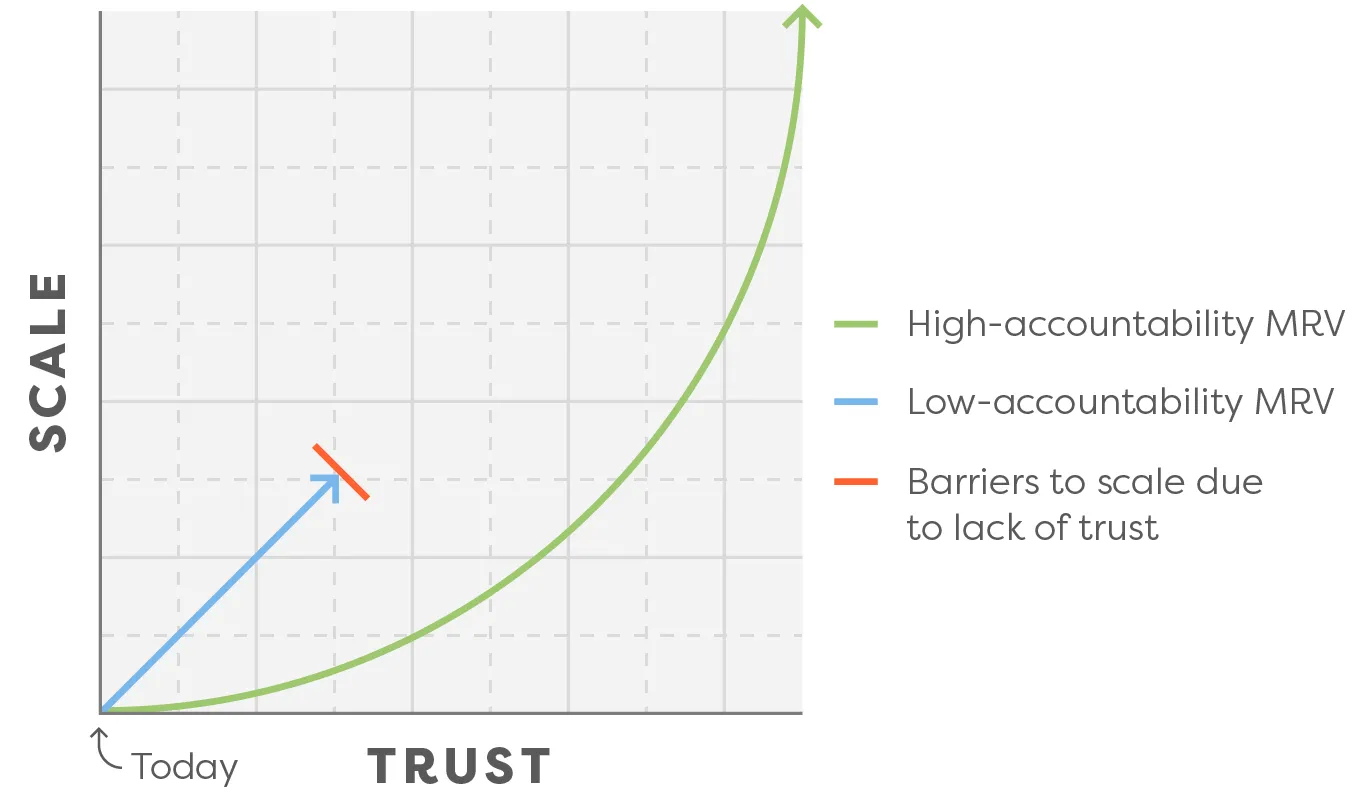As a field, we’ve made some big promises about carbon removal in the last few years. To support that ambition and keep up momentum, diligence and vigilance will be key. We need a robust accounting system that people can trust to prove we’re delivering on those promises. We need MRV.
At Carbon180, we define MRV as the process of accounting for all of the emissions, energy use, and environmental and public health outcomes associated with a carbon removal project. This allows us to determine the net climate impact of a given policy or project. It tells us if the work was done safely and effectively, and provides receipts to help us prove it.
-
Monitoring
Measuring carbon removal activities and effects over time to confirm that the carbon that was removed stays safely and permanently locked away.
-
Reporting
Collecting and sharing the full picture of a carbon removal project, including tons removed, energy consumed, public safety metrics, and ecosystem impacts.
-
Verification
Using open-source, peer-reviewed, third-party protocols to reduce the risk of fraud and make sure that projects meet the principles of quality carbon removal.
Four principles of high-accountability MRV
Designed properly, MRV protocols will hold the right people accountable both while a project is in progress and after it’s wrapped. Our framework lays out an intuitive, chronological process, starting with careful measurement during the removal of carbon and robust monitoring going forward. It also provides checks and balances in the form of transparent information sharing and verification of aligned incentives.
Together, these four principles work in concert to make sure the carbon removal that’s promised is actualized.

These principles will be vital to MRV today and as the carbon removal field expands to gigaton scale. When we get there, we’ll be working in a different world. An MRV framework like this would create the market-based accountability we need, holding suppliers (the people removing CO₂ from the atmosphere) accountable to buyers (the people who purchase CO₂ removal). At the same time, it’ll ensure that taxpayer dollars don’t go to waste. Instead, we’ll be able to confidently put financing toward the most impactful projects and provide that same level of confidence to local communities knowing that their public health and the environment are protected.
Why trust matters
We talk a lot about trust because without it, the consequences could be dire for this field. In particular, carbon removal depends on gaining and keeping the trust of two critical groups: the communities that will host carbon removal projects and the taxpayers that enable them. Both groups need to see that carbon removal solutions bring real climate and economic benefits, with the data and evidence to back it up.

We’re just starting down the path towards building an industry that can reverse two centuries of carbon emissions — and there are many opportunities to get lost along the way if we take shortcuts. High-accountability MRV is the best way to guarantee that carbon removal lives up to its full potential to help current and future generations thrive.
Anu KhanEntrepreneur in Residence
Weaving MRV through everything we do
MRV isn’t just a framework for the future of carbon removal, it’s the thread that connects all of the projects, policies, and pathways we support at Carbon180. We believe that this high-accountability way of working should start with direct community engagement at the outset of any project. The questions and concerns raised by key stakeholders and community members provide opportunities to not only illuminate the measures that have already been put in place to hold the project accountable, but also give project owners the chance to re-evaluate them when necessary. Explore the projects below to see MRV at work in our recent efforts.

